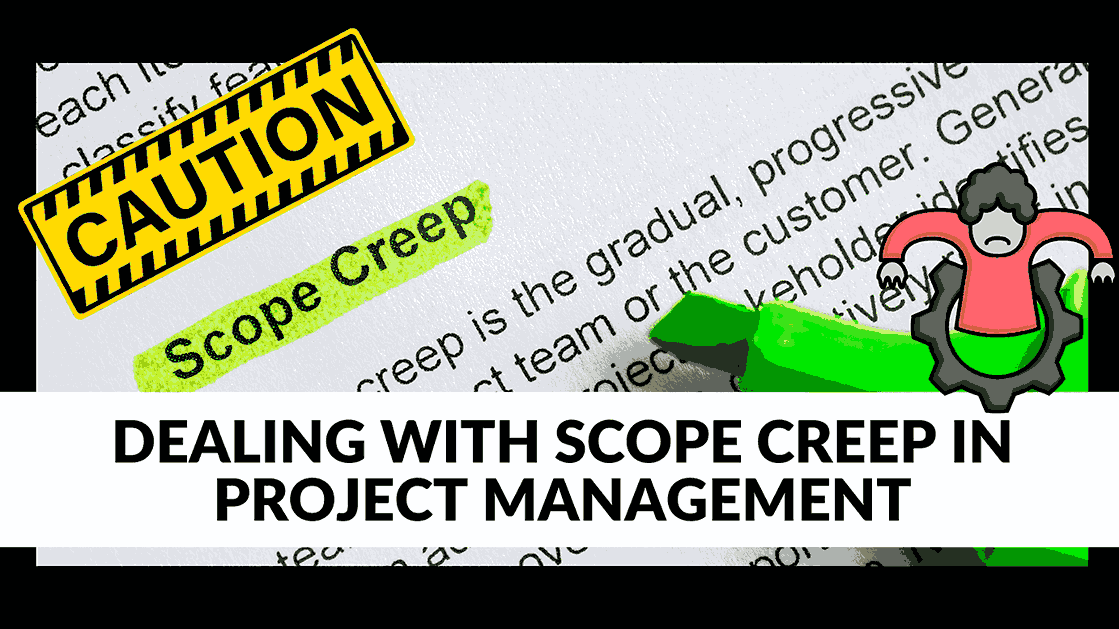Dealing with scope creep in project management


Dealing with scope creep in project management
Scope creep – two words that can send a shiver down the spine of any project manager. It’s that sneaky phenomenon where your well-planned project suddenly starts sprouting additional tasks and deliverables like unwanted weeds in a garden. As a project manager, it’s crucial to understand what scope creep is, what causes it, and, most importantly, how to avoid it. In this article, we’ll dive into the world of scope creep and provide you with nine valuable strategies to keep your projects on track.
What is Scope Creep?
Scope creep is like the unwelcome guest at a carefully planned party – it shows up without an invitation and disrupts everything. In project management, scope creep happens when a client introduces new requirements, tasks, or deliverables that go beyond the original project scope. These unanticipated changes can wreak havoc on your project, leading to missed deadlines, budget overruns, increased timelines, and unhappy clients.
Scope creep often rears its head when project deliverables are not well-defined, stakeholders are not sufficiently involved or supportive, or when tasks turn out to be more complex than initially estimated. To maintain a successful client-consultant relationship, managing the project scope is essential.
What Causes Scope Creep?
The road to scope creep is paved with various pitfalls. Here are some common causes:
1. Lack of Preparation and Poor Initial Analysis: A project may have a grand vision, but without clearly defined and measurable tasks, it’s at risk. Without a detailed project plan, holding both you and your client accountable becomes challenging.
2. Minimal Stakeholder Involvement: When a project lacks strong executive support or active stakeholder engagement, meeting client expectations becomes difficult. Lack of communication between key players can lead to unnecessary work.
3. Insufficient Experience and Inconsistent Processes: If a client project manager lacks experience dealing with the project’s size or complexity, it can lead to budget overruns, missed deadlines, or unanticipated work.
4. Underestimating Project Complexity: When a project takes longer or is more complex than initially defined, scope creep can quickly set in. Ignoring red-flag issues can result in an unmanageable project and strained client-contractor relationships.
9 Ways to Avoid Project Scope Creep
Now that we’ve explored what scope creep is and what causes it, let’s delve into nine strategies to prevent it and ensure your project stays focused on its agreed-upon deliverables:
1. Lay a Strong Foundation: To effectively manage scope, begin with a well-defined project scope. Gather requirements and interview stakeholders thoroughly to get a comprehensive understanding of the project’s requirements.
2. Set Clear and Measurable Objectives: Your project plan should outline the work to be done with milestones and metrics clearly defined.
3. Always Have a Written Contract: A well-documented contract sets clear expectations at the project’s start. This documentation simplifies the identification and management of scope creep.
4. Create a Backup Plan: Projects rarely go off without a hitch. Prepare by setting up a backup plan that addresses scope changes, who will review and approve them, how timelines can be extended, and the associated costs.
5. Host a Kick-off Meeting: Start your project with a kick-off meeting, bringing all project stakeholders together for a final review. Review roles, project milestones, and reporting processes.
6. Communicate Clearly and Often: Take the lead and meet with your client when scope changes arise. Provide your professional input, decide on a course of action, and carry it out.
7. Know When to Say No: If a requested change does not add value or harms your project, don’t hesitate to decline. Present your case to the client and discuss the best way forward.
8. Examine Your Bill Rate: Scope creep can impact your earnings. Ensure your bill rate reflects not only costs but also the value you provide.
9. Provide Options for Additional Work: When a client requests more work, remind them of the original scope and present two options: add the work for an extra fee or stick to the agreed scope.
Dealing with scope creep is essential to maintaining a stress-free work environment and ensuring your project’s success. By developing a well-defined project scope, communicating effectively, and proactively managing scope changes, you’ll be better equipped to keep your projects on track. So, the next time scope creep knocks on your project’s door, you’ll be ready to send it packing.
In conclusion, dealing with scope creep in project management can be a challenging task, but with the right tools and resources, it is possible to effectively manage and mitigate its impact. Subscribed.FYI offers a comprehensive platform that provides freelancers and small teams with the ability to understand, compare, and manage their SaaS stack. By simplifying decision-making and enhancing productivity, Subscribed.FYI empowers users to navigate the complexities of SaaS tools and expenses, making it easier to make informed decisions about the best options for their specific requirements. Additionally, Subscribed.FYI Deals offers exclusive member-only deals on 100+ SaaS tools, allowing users to unlock savings of $100,000+ per year and manage all subscriptions in one place. With Subscribed.FYI, freelancers and small teams can take control of their expenses and make informed decisions about their SaaS tools, ultimately helping them to effectively deal with scope creep in project management.
At the end of the day, having the right tools and resources can make all the difference in effectively managing scope creep in project management. With Subscribed.FYI, freelancers and small teams can access comprehensive information about SaaS tools, compare various options side by side, and make informed decisions based on their specific needs. By unlocking exclusive member-only deals and managing all subscriptions in one place, Subscribed.FYI empowers users to take control of their expenses and navigate the complexities of SaaS tools, ultimately helping them to effectively deal with scope creep in project management. To learn more about Subscribed.FYI and access exclusive member-only deals, visit Subscribed.FYI and Subscribed.FYI Deals.
For further insights on managing scope creep, consider checking out these resources:





